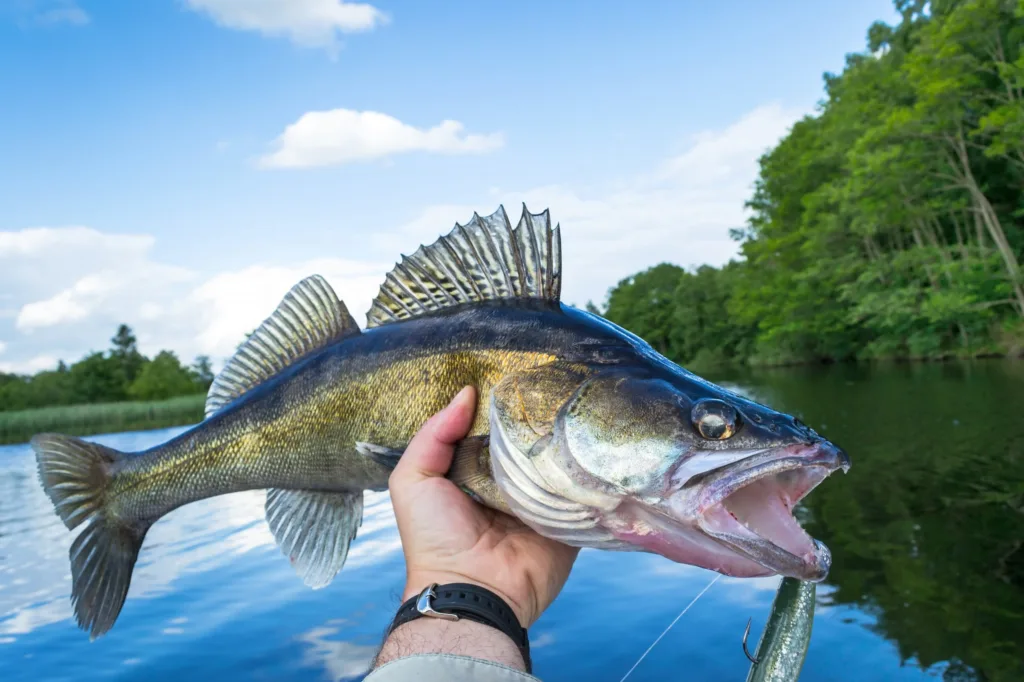Walleye is a popular fish species found in North America. It is known for its delicious taste and the challenge it poses to anglers. But have you ever wondered about the teeth of a walleye? How do they compare to the teeth of other predatory fish, such as pike and muskie? In this article, we will take a closer look at walleye teeth and learn more about their structure and function.
Walleye teeth are not as sharp as pike or muskie teeth. They are more pointy and blunt, and they are spread apart. This means that walleye teeth do not grow in tight rows or pads, as is the case with pike and muskie. The teeth of a walleye are canine-type teeth, which means they are designed to grab and hold prey while hunting.
Despite their lack of sharp edges, walleye teeth are still effective in cutting fishing line. This is because the teeth are pointed and can easily pierce through the line. However, it is not as easy to cut a line with walleye teeth as it is with pike or muskie teeth.
One interesting fact about walleye teeth is that they are constantly being replaced. This is because the teeth are subject to wear and tear as the fish feeds and hunts. As such, walleye teeth are constantly growing and being replaced throughout the fish’s life.
So, what is the purpose of walleye teeth? As mentioned earlier, they are used to grab and hold prey while hunting. Walleye are opportunistic feeders and will eat a variety of prey, including smaller fish, insects, and crustaceans. The teeth help the walleye to grab onto its prey and prevent it from escaping.
Walleye teeth may not be as sharp as those of other predatory fish, but they are still effective in helping the walleye to hunt and feed. Their pointed and blunt structure allows them to pierce through fishing line, while their canine-type design helps them to grab and hold onto prey. Walleye teeth are constantly being replaced throughout the fish’s life, which ensures that they are aways in top condition for hunting and feeding.
Do Walleye Have Sharp Teeth?
Walleye do have teeth, but their teeth are not sharp like those of pike and muskie. Walleye teeth are pointed, but they lack any sharp edges that could slice through things like fishing line. In contrast, pike and muskie teeth are very sharp and can easily cut through fishing line. Additionally, pike and muskie have sharp gill covers and gill rakers, which can also cause damage if handled improperly. while walleye do have teeth, they are not considered to be a significant threat to anglers or other fish.

Why Do Walleye Have Sharp Teeth?
The walleye (Sander vintreus) possesses sharp teeth because it is a predator fish that needs to catch and hold onto its prey while hunting. The sharp teeth, which are more pointed and blunt than sharp, aid the walleye in grasping and retaining its prey. Unlike other predatory fish such as pike or muskie, walleye teeth are spread out and do not grow in tight rows or pads. This characteristic makes the walleye’s teeth more efficient in holding onto slippery prey in the water.
Can Walleye Teeth Cut Line?
Walleye teeth can certainly cut fishing line. Walleyes have sharp, needle-like teeth that are capable of slicing through various types of fishing lines, including monofilament and fluorocarbon. Additionally, the teeth can also damage braided lines, which are generally considered to be more durable than other types of lines. Therefore, it is essential to use a leader when fishing for walleye to prevent the line from being cut by their teeth. It is also recommended to use a line with a higher pound test to provide additional strength and resistance against the fish’s teeth.
Conclusion
Walleye teeth are an important feature of this predatory fish. While they may not be as razor sharp as the teeth of pike or muskie, they are still effective at helping the walleye grab and hold onto its prey. Despite their pointy and blunt shape, they are still capable of cutting though line if necessary. It is important for anglers to understand the differences between walleye teeth and the teeth of other fish in order to properly identify their catches and prepare for potential line-cutting incidents. walleye teeth may not be the most fearsome in the fish world, but they are still a crucial part of the walleye’s hunting arsenal.
